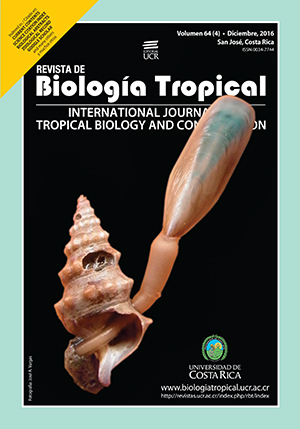Abstract
In the current study differentiation of the total proteins among Biomphalaria alexandrina snails at different ages was done to identify the proteins responsible for the snails’ compatibility outcome. The work was conducted on snails that differ in their age and the genetic backgrounds. Four subgroups from the progeny of self reproduced susceptible and resistant snails were studies. Infection rates of these subgroups (young susceptible, adult susceptible, young resistant and adult resistant) were 90%, 75%, 40% and 0% respectively. Using Sodium dodecyl sulphate polyacrylamide gel electrophoresis, differences in protein expression were shown between adult and young snails in different subgroups. Dice similarity coefficient was calculated to determine percentage band sharing among the experimental subgroups. The results revealed that the combination of similarities between both age and compatibility status of the snails has led to the highest similarity coefficient followed by the combination of similarities of both genetic origin and age although they differ in the compatibility status. On the other hand, the differences in the genetic background, age and compatibility status have led to the least similarity index. It was also found that in young snails the genetic background plays the main role in determination of their compatibility, while the internal defense system has the upper hand in determination of adult compatibility. Further characterization of the shared protein bands among the studied subgroups is needed to clarify their role in host-parasite relationship.
References
Abdel-Hamid, Z.A., Rawi, S.M., & Arafa, A.F. (2006). Identification of genetic marker associated with the resistance to Schistosoma mansoni infection using random amplified polymorphic DNA analysis. Memórias do Instituto Oswaldo Cruz, 101, 863-868.
Abou-El-Naga, I.F., Eissa, M.M., Mossallam, S.F., & Abd El-Halim, S.I. (2010). Inheritance of Schistosoma mansoni infection incompatibility in Biomphalaria alexandrina snails. Memórias do Instituto Oswaldo Cruz, 105, 149–154.
Abou-El-Naga, I.F., & Radwan, E.H. (2012). Defense response of susceptible and resistant Biomphalaria alexandrina snails against Schistosoma mansoni infection. Revista de Biolog´ıa Tropical, 60 (3), 1195–1204.
Abou-El-Naga, I.F., El-Nassery, S.M.F., Allam, S.R., & Mady, R.F.M. (2014). In vitro interactions between the defense systems of resistant and susceptible Biomphalaria alexandrina and sporocysts of Schistosoma mansoni. Veterinary Parasitology, 205, 712–716.
Abou-El-Naga, I.F., Sadaka, H.A., Amer, E.I., Diab, I.H., & Khedr, S.I.A. (2015). Impact of Biomphalaria alexandrina snails` age on transmission of Schistosoma mansoni: Modulation of the genetic outcome and the internal defense system of the snail. Memórias do Instituto Oswaldo Cruz, 110 (5), 585-595.
Bayne, C.J. (2009). Successful parasitism of vector snail Biomphalaria glabrata by the human blood fluke (trematode) Schistosoma mansoni: a 2009 assessment. Molecular and Biochemical Parasitology, 165 (1), 8-18.
Chernin, E., & Dunavan, C.A. (1962). The influence of host-parasite dispersion upon the capacity of Shistosoma mansoni miracidia to infect Australorbis glabratus. The American Journal of Tropical Medicine and Hygiene, 11, 455-471.
Coelho, P.M., Carvalho, O.S., Andrade, Z.A., Martins-Sousa, R.L., Rosa, F.M., & Barbosa. L. (2004). Biomphalaria tenagophila/Schistosoma mansoni interaction: premises for a new approach to biological control of schistosomiasis. Memórias do Instituto Oswaldo Cruz, 99 (1), 109-111.
Corrêa, L.R., & Paraense, W.L. (1971). Susceptibility of Biomphalaria amazonica to infection with two strains of Schistosoma mansoni. Revista do Instituto de Medicina Tropical de São Paulo, 13(6), 387-390.
Dice ,L.R. (1945). Measures of the amount of ecological association between species. Ecology, 26, 297-302.
El-Dafrawy, S.M., El-Din, A.T., & Hamid, H.A. (2006). Electrophoretic patterns of protein fractionations in hemolymph and tissues of Biomphalaria alexandrina and Bulinus truncatus during course of schistosome infection. Journal of the Egyptian Society of Parasitology, 36(3), 795-807.
El-Nassery, S.M., Abou-El-Naga, I.F., Allam, S.R., Shaat, E.A., & Mady, R.F. (2013). Genetic variation between Biomphalaria alexandrina snails susceptible and resistant to Schistosoma mansoni infection. Biomed Reearchs Inernational, 160320.doi: 10.1155/2013/160320.
Lewis, F.A., Patterson, C.N., & Gizywarz, C. (2002). Parasite susceptibility phenotypes of F1 Biomphalaria glabrata progeny derived from interbreeding of Schistosoma mansoni resistant and susceptible snails. Parasitology Research, 89, 98-101.
Mohamed, A.H. (2005). Characterization of surface lectins binding and SDS-PAGE protein patterns of Biomphalaria alexandrina haemocytes infected with Schistosoma mansoni. Journal of the Egyptian Society of Parasitology, 35(2), 615-630.
Morgan, J.A., Dejong, R.J., Snyder, S.D., Mkoji, G.M., & Loker, E.S. (2001). Schistosoma mansoni and Biomphalaria: past history and future trends. Parasitology, 123(l), 211-228.
Niemann, G.M., & Lewis, F.A. (1990). Schistosoma mansoni: influence of Biomphalaria glabrata size on susceptibility to infection and resultant cercarial production. Experimental Parasitology, 70, 286–292.
Raghavan, N., Miller, A.N., Gardner, M., Fitz-Gerald, P.C., Kerlavage, A.R, Johnston, D.A.,… Knight, M. (2003). Comparative gene analysis of Biomphalaria glabrata hemocytes pre- and post-exposure to miracidia of Schistosoma mansoni. Molecular and Biochemical Parasitology, 126(2), 181-91.
Richards, C.S., & Merritt, J.R. (1972). Genetic factors in the susceptibility of juvenile Biomphalaria glabrata to Schistosoma mansoni infection. The American Journal of Tropical Medicine and Hygiene, 21, 425-434.
Richards, C.S., & Shade, P.C. (1987). The genetic variation of compatibility in Biomphalaria glabrata and Schistosoma mansoni. Journal of Parasitology, 73(6), 1146–1151.
Richards, C.S., Knight, M., & Lewis, F.A. (1992). Genetic of Biomphalaria glabrata and its effect on the outcome of Schistosoma mansoni infection. Parasitology Today, 8 (5), 171-174.
Rosa, F.M., Godard, A.L.B., Azevedo, V., & Coelho, P.M.Z. (2005). Biomphalaria tenagophila: dominant character of the resistance to Schistosoma mansoni in descendants of cross breedings between resistant (Taim, RS) and susceptible (Joinville, SC) strains. Memórias do Instituto Oswaldo Cruz, 100(1), 19–23.
Steinmann, P., Keiser, J., Bos, R., Tanner, M., & Utzinger, J. (2006). Schistosomiasis and water resources development: systematic review, meta-analysis, and estimates of people at risk. The Lancet of Infectious Diseases, 6(7), 411–425.
W.H.O. (2015). Schistosomiasis Fact Sheet. No.115. (Updated 2015) http://www.who.int/mediacentre/factsheets/fs115/en/.
Zanotti-Magalhães, E.M., Magalhães, L.A., Carcalho, J.F. (1997). Relationship between pathogenicity of Schistosoma mansoni in mice and the susceptibility of the vector mollusk. IV-Infectiousness of miracidia. Revista de Saúde Pública, 31(5), 488-494.
##plugins.facebook.comentarios##

This work is licensed under a Creative Commons Attribution 4.0 International License.
Copyright (c) 2016 Revista de Biología Tropical






